Best 10 Inch Cordless Miter Saw
Best Cordless 10 Inch Miter Saw – Head To Head
For this installment of our Best Cordless Miter Saw, we took a look at the top three 10-inch cordless sliding miter saws. 10-inch miter saws are popular with carpenters because of their reduced size and weight with the comparable cutting capacity to larger 12-inch saws.
This size saw will probably fit your needs whether you are a professional contractor investing in a new miter saw for speed and accuracy, a homeowner seeking the safety and accuracy of a miter saw, or a woodworker looking to upgrade a shop saw. This tool will see a lot of cuts, so you want to make sure you find the right 10-inch cordless miter saw that meets your needs at a price you can afford.
If this is your first time reading one of our Head to Heads, trust that our crew poured over each saw to give you a comprehensive look at these tools. We provide our readers with insights you can only expect from seasoned pros, arming you with all the information you need before investing in a miter saw.
Best 10-inch Cordless Miter Saw Evaluation Format
Once again our team has put some serious time and effort into our Best 10 Inch Cordless Miter Saw evaluation to bring you the most comprehensive information available. For this evaluation, we broke things into several categories including Precision & Accuracy, Performance (speed/power), Features, Ergonomics, Dust Collection, Decibels, and Price. For each of these categories, we will rank the saws, and in the end, we will name the Best 10-inch Cordless Miter Saw based on the combined results.
- Precision, and Accuracy – In this category, we evaluated the accuracy of the miter saws, out of the box, and how easy it is to make adjustments.
- Performance [Power / Speed Test] -We looked at cutting speed as an indicator of saw motor performance.
- Run-time – Lots of Pros think run-time is important. The performance evaluation took a very deep dive into the power of the saw motors and how well the saws managed repetitive cutting of framing lumber.
- Features – An overall comparison of features and specifications.
- Ergonomics – Ergonomics are really important to users and an important category to consider when purchasing any power tool. In addition to traditional ergonomics, we also included functionality in this category.
- Dust Collection – Construction is a messy business and dust is one of the biggest evils in our industry.
- Decibels – We evaluated the sound level in decibels
- Price – Price is always an important factor in determining which saw is best for a user. We’ve included the current pricing found online for each of the saws “as-tested,” at the time of publication.
10″ Inch Cordless Track Saw Specifications
Before we present the Best 10 Inch Cordless Miter Saw test results, it’s helpful to set the stage by listing all the features and specifications for comparison. Specific differences in the saws are listed below.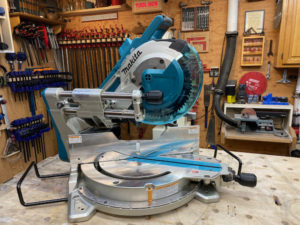
Makita 10-inch Miter Saw XSL06PT
- Blade Diameter: 10″
- RPM 4400
- Weight 60.6 lbs
- Max angle 60
- Max Bevel 48
- Laser
- Two 18 Volt batteries [36V Operating Voltage]
- 5 Ah Battery Packs used in this testing.
- Watt-Hours: 36V x 5 Ah = 180 Wh
Metabo HPT 10-inch Miter Saw C3610DRAQA
- Blade Diameter: 10″
- RPM 4000
- Weight 45.5
- Max Angle 55L 60R
- Max Bevel 48
- Laser and LED light
- 36 volt
- 4 Ah Battery Pack used in this testing.
- Watt-Hours: 36V x 4 Ah = 144 Wh
Milwaukee 10-inch Miter Saw 2734-21HD
- Blade Diameter: 10″
- RPM 4000
- Weight 45
- Max Angle 50/60
- Max Bevel 48
- Light
- 18 volt
- 9 Ah Battery Pack used in this testing.
- Watt-Hours: 18V x 9 Ah = 162 Wh
10-Inch Miter Saw Accuracy and Precision
To be consistent all three saws were equipped with a Makita 60-tooth 10-inch blade.
Many users that buy a miter saw will open the shipping container and begin to use the saw right out of the box. Framers or other craftsmen that are not too concerned with the finest accuracy come to mind. However, other users will care a lot about the accuracy of their new saw and want to tune it to as near perfect as can be achieved.
For a finish carpenter, or woodworker a miter saws ability to make an accurate cut must be routinely checked and maintained because a little misalignment can cause compounding errors on a project.
We checked the calibration of the saws out of the box, recorded our findings, and then calibrated the saws, noting the level of difficulty to get them tuned up. Miter saw calibration is a critical step because a difference as small as 1° over a 1-in. span will result in a 1/64-in. the gap in the finished miter joint. Similarly, 3° over 5-in. span gives you a 9/32-in. gap.
10-Inch Cordless Miter Saw Accuracy Testing Winner – Milwaukee
Milwaukee scored 5 total points and took number one in ALL but one category. Makita came in second at 7-points and Metabo HPT 10-points.
| Accuracy/ Precision | Cross Cut | 45 Deg Miter | Bevel | Table & Fence | Totals | Ranking |
| Milwaukee | 1 | 2 | 1 | 1 | 5 | 1 |
| Makita | 1 | 3 | 1 | 2 | 7 | 2 |
| Metabo HPT | 3 | 1 | 3 | 3 | 10 | 3 |
The TBB crew wanted to give the readers an idea of how well the saws scored on accuracy right out of the box. We looked at the following areas:
- Table flatness
- Fence flatness
- Bevel accuracy when set to 0 degrees
- Miter accuracy when set to 45 degrees.
- Crosscut accuracy when set to 90 degrees
Table Flatness – For table flatness, we used a Bridge City Tool Works 24 inch stainless steel flat edge. We placed the flat edge onto the table and first looked for any light that could shine between the table surface and the stainless flat edge. Where the light shone through, we took a set of machinist feeler gauges and determined the size of the gap under the flat edge. We recorded the data and proceeded to check the fence accuracy. We turned the Bridge City flat edge and held it up to the lower part of each saws’ fence. Some of the saws have a single piece lower fence and others have a two-part lower fence. We measured any gap between the fence and the flat edge and noted the maximum reading from the feeler gauges.
0-Degree Bevel – For 90-degree bevel accuracy, we adjusted the saws to contact the factory setting for a 90-degree vertical cut. Then we used a Wixey digital gauge to measure the degrees between the table of the saw and the body of the blade. The Wixey gauge can be set to zero out any inclination in the saw as it sits on a bench. This enables the user to read the accurate relative difference in inclination between the table and the blade. We zeroed out the gauge each time we took a reading.
45-Degree Miter – Cutting 45-degree miters is a critical function of these types of miter saws. We measured the factory 45-degree cuts by setting the saw to its 45-degree setting. We made a cut into 2×4 lumber and read the actual cut with a digital T-Bevel gauge. For each cut, we zeroed the gauge. Then we took the reading and recorded the data. This type of gauge is accurate to one-tenth of a degree.
90-Degree Cross Cut – For this test, we set the saw to the factory 90-degree setting for a cross-cut. We crosscut a piece of plywood that had one edge squared with a track saw. We took the ‘cut-off’ piece and flipped it 180 degrees along the long axis. We lined up the two pieces against a straight edge and noted if there were a gap between the two halves along the cut edge. If we saw a gap, we measured this gap with feeler gauges. By flipping one of the pieces 180 degrees, this meant that any deviation from a 90-degree cut would show twice the error than just measuring one side by itself.
Miter Saw Performance
For the performance section, we tested the run-time and speed of cut with the battery sold with the saw in a kitted form.
Power Test – Winner Makita
The Power Test is a good indication of what the saw and blade configuration can cut. We made five timed cuts in 7-1/4″ LVL lumber and recorded the average time.
Finally, we conducted a speed test to quantify the power each saw displayed on a challenging piece of engineered lumber. This is a simple test with some uncontrolled variables, but our methods were fair.
| LVL Speed Test | Ave. Sec. | Rank |
| Makita | 2.6 | 1 |
| Milwaukee | 2.7 | 2 |
| Metabo HPT | 3.7 | 3 |
We had the same operator conduct each cut, with the instruction to let the saw do the cutting, apply as much pressure as the saw and blade would allow. We waited for the blade to come to a complete stop, indexed the material, and then started a fresh cut. Time was started from the time the blade hit the wood till it exited out the back of the LVL and completed the cut. We timed 5 cuts per saw and took the average time. The Makita saw averaged 2.6 seconds per cut, followed by Milwaukee at 2.7, and Metabo HPT in third place at 3.7 seconds.
Run-time Test – Winner Milwaukee
For the run-time test, we made repetitive cuts in KD lumber until the battery was exhausted or thermal overload prevented further cutting. Operators were instructed to start the saw and bring it up to speed. Bring the saw forward, make the cut, wait for the blade to stop, reset, and repeat.
| 2x6 KD Run-time | # Cuts | Rank |
| Milwaukee | 279 | 1 |
| Makita | 203 | 2 |
| Metabo HPT | 180 | 3 |
The Milwaukee cut 279 cuts in 2×6 lumber and cut amazingly well until the very end. No thermal overloads were encountered. In second place was the Makita with 203 cuts. The third place was Metabo HPT with 180 cuts.
Run-time Normalization by Watt-hours
Each of these saws came with a different sized “energy power plant” or battery configuration. As you can imagine, the saw with the greatest watt-hr battery theoretically has a leg up on its competition for run-time cuts. Whenever we do a cordless tool comparison, we level the playing field by taking the results and dividing the results by the number of watt-hr for the particular saws’ battery. In this way, the reader can see which saw has the most effective combination of battery technology, stamina, and motor power on a per watt-hr basis.
In this H2H, the batteries varied both in voltage and amp-hrs. We derive the watt-hrs by multiplying the load voltage by the amp-hours. The following table shows the results of the run-time test when normalized.
| Normalized Cuts Per Watt-Hr | ||||
| # Cuts | Watt-Hr | Cuts/Watt-hr | Rank | |
| Milwaukee | 279 | 162 | 1.70 | 1 |
| Metabo HPT | 180 | 144 | 1.25 | 2 |
| Makita | 203 | 180 | 1.10 | 3 |
After running the calculations, Milwaukee came in first, followed by Metabo HPT and Makita.
10-Inch Miter Saw Features – Winner – Makita
Comparing tools from multiple brands is never easy but the devil can live in the details at times so a comparison is certainly warranted. The Milwaukee was the only saw running at 18-volts, the Makita uses two 18-volt batteries [36 volts] and the Metabo HPT uses an 18-36 Volt Multivolt battery running at 36 volts.
| Features | Makita | Metabo HPT | Milwaukee | ||||||||||
| Laser Light | 2 | 2 | 1 | ||||||||||
| Max Angle | 1 | 2 | 3 | ||||||||||
| Max Bevel | 1 | 1 | 2 | ||||||||||
| Dust port capability | 1 | 2 | 2 | ||||||||||
| Outriggers | 1 | 2 | 2 | ||||||||||
| Compact / Forward Slide | 1 | 1 | 2 | ||||||||||
| AC/DC | 2 | 1 | 2 | ||||||||||
| Wireless Vac Activation | 1 | 2 | 2 | ||||||||||
| Blade Break | 1 | 1 | 1 | ||||||||||
| Blade Guard Operation | 1 | 1 | 1 | ||||||||||
| Dado Cut | 2 | 2 | 1 | ||||||||||
| Totals | 14 | 17 | 19 | ||||||||||
| Rank | 1 | 2 | 3 |
The Makita saw won the features section due to a combination of their maximum angle/bevel cuts, double dust port, wireless vacuum activation, excellent outriggers, and forward rail design. Overall the Makita is a solid design, with high-quality built-in features with real-world trim carpentry use. Makita knows saws!
Second place went to the Metabo HPT and Milwaukee came in third with a solid bare-bones design.
Notable 10-Inch Miter Saw Features
Laser vs. LED Shadow Light – The Makita and Metabo HPT miter saws both have a built-in laser that indicates one side of the blade and can be adjusted to display “left-of-blade” or “right-of-blade.” This laser also has a separate on/off switch. The laser displays the line-of-cut with the tool turned off and the blade not spinning, which we liked for lining up cuts.
In general, the TBBCrew is not a fan of lasers and prefers the blade shadow light option similar to the Milwaukee saw. This shadow light marks the blade in ANY lighting situation, and unlike a laser, never has to be calibrated since it casts a shadow of any blade mounted on the saw onto the workpiece. It’s foolproof.
Dust Collection In the past, dust collection was not a particularly important focus for tool manufacturers. We’ve felt that dust ports were like LED lights, tool manufacturers threw them on a tool to say they had the feature. Those dust ports, like many LEDs, neither worked well nor are they efficient.
Today, that’s changed, and many manufacturers are pushing innovation in the dust collection area. This change is largely driven by user safety requests and demand. The trend, without a doubt, is to make tools more efficient at capturing dust. We’re seeing it now with silica dust in the concrete industry and in the proliferation of wood dust collection solutions. Moreover, we all can appreciate having less mess to clean up at the end of the day.
Additionally, when remodeling in someone’s home, an effective dust extraction system is a SOLID tactic to prevent dust from spreading to other areas of the home. We all know that dust inevitably finds its way beyond the work area and settles on all horizontal surfaces and duct-work. So anything we can do to reduce that migration prevents additional clean up time and cost and makes us more professional.
READ – Remodeling “in-place,” Best Practice Dust Control on a Remodel ~ by Rob Robillard
Makita recognizing this move towards more efficient dust extraction worked to improve their dust collecting process. The Makita 10″ Dual-Bevel Sliding Compound Miter Saw has dual-port dust capturing system. This is evidenced by the two dust tubes and large dust collecting mouth, behind the blade, at the base table.
AC / DC Option – The Metabo HPT is the only miter saw of these three with the capability to run on battery or corded power. Metabo HPT accomplishes this with a battery pack adapter that attaches to a 20-foot cord and “brick-like” inverter.
Forward Rail Design – We found the Makita and Metabo HPT forward rail design to operate smoothly. The forward rails also take off significantly less space behind the saw. This takes up less room in the shop or on the job site. If you have a small shop or work in cramped spaces regularly this feature can open up a lot of floor space.
On the Makita there was no slop in the saw head, the bevel and angle mechanisms reeked of quality, and the miter head and slide locking pins are the nicest design we’ve seen on a saw.
Makita Auto-Start Wireless System – The Makita offers an auto-Start Wireless System (AWS™) that enables wireless power-on/power-off with an AWS-equipped dust extractor.
With AWS, the vacuum/dust extractor runs only when the trigger on the tool is pulled; when it’s released, the vacuum stops. This reduces noise on the job site, allows for longer run time for a cordless vacuum, and eliminates over-reaching to turn the vacuum on and off.
The AWS-capable tool is enabled with an optional small wireless transmitter inserted into a port on the tool. The transmitter can communicate with a Makita dust extractor also equipped with an AWS-transmitter.
The AWS-equipped tool can also communicate with ANY corded dust extractor with an on-board AC outlet and the optional Makita AWS Universal Adaptor. The Adaptor has an AWS wireless transmitter, and plugs-into the dust extractor’s on-board AC outlet. The transmitter and adapter are optional and do cost more money but the convenience, long-term time savings, and efficiency make it an investment worth considering.
Ergonomics – Winner – Milwaukee
The ergonomics evaluation in this section is purely subjective and based on the opinions of the testing crew. After a full day of running performance tests, the team spent several hours in the shop testing and ranking the saws in seven [6] categories including:
- Switch
- Grip
- Miter Adjustment
- Bevel Adjustments
- Fence Adjustment
- Transport / Balance
| Weight | lbs. | Rank |
| Milwaukee | 45 | 1 |
| Metabo HPT | 45.5 | 2 |
| Makita | 60 | 3 |
We weighed each saw, and carried the saws upstairs, through doorways, transported one-handed to open doors or gates, and loaded/unloaded the saw into a work vehicle. Depending on the primary application of your miter saw needs, transportation is a major part of the day to day considerations you’ll want to take into account before committing to a new saw
| Ergonomics | Milwaukee | Makita | Metabo HPT | |||||
| Ambidex Switch | 2 | 1 | 3 | |||||
| Grip | 2 | 1 | 3 | |||||
| Miter Angle Adjustment | 1 | 3 | 2 | |||||
| Bevel Angle Adjustment | 1 | 2 | 3 | |||||
| Fence Adjustment | 1 | 3 | 2 | |||||
| Transport Balance | 1 | 2 | 3 | |||||
| Total Points | 8 | 12 | 16 | |||||
| Rank | 1 | 2 | 3 |
Milwaukee took the ergonomics section with a score of 8 points. Makita came in at 13-points and Metabo HPT was 16-points.
Milwaukee won every category except the switch and grip. It has a clean and simple design that is very intuitive to use. It is also lightweight and was the easiest to transport.
Dust Collection – Winner – Metabo HPT
First, we conducted a dust collection test. From carpenters working in finished spaces, to shop workers who want to reduce the amount of airborne dust in their environment, knowing how well a saw will integrate with a vacuum is an important measure of performance for any user.
We made 25 cuts on a 2×6 piece of KD lumber and measured the volume of wood dust that was collected by the vacuum. Additionally, we assessed the buildup of dust that didn’t make it into the vacuum but accumulated on the table and fence of the tool. The result of the dust collection test are depicted in the table below:
| SawDust | Weight oz. | Rank |
| Metabo HPT | 9.0 | 1 |
| Makita | 8.0 | 2 |
| Milwaukee | 6.0 | 3 |
Metabo HPT took first place by capturing 9-ounces of sawdust compared to the second place Makita [8-ounce] and third place Milwaukee at 6-ounces. The Metabo HPT has a 2-inch port that is in line and 2-1/4″ back from the bade. This port travels with the blade as the saw head slides.
The Makita has one, smaller, dust port that travels with the blade and the other port is stationary and is located behind the fences. The Milwaukee dust port is set back approximately 8-inches from the back of the blade when the head of the saw is pulled fully forward on the rails.
Decibels – Winner Metabo HPT
OSHA allows 8 hours of exposure for up to 90 dB, for exposures 95dB and greater, the exposure limits drop dramatically. So clearly these saws all need hearing protection.
Note that we tested these saws in a no-load capacity, under load the saws are louder.
| Noise | db | Rank |
| Metabo HPT | 95.2 | 1 |
| Makita | 96.6 | 2 |
| Milwaukee | 100.3 | 3 |
The quietest saw was the Metabo HPT at 95.2 decibels followed by the Milwaukee at 96.6 decibels and the Makita at 100.3.
Pricing – Milwaukee
Below we’ve included the current pricing (at the time of publication). Pricing is based on kit price.
The best-priced 10-inch miter saw was the Milwaukee at $ 499.00 coming in $20.00 less than the Metabo HPT saw which is priced at $ 519.00. The Makita was the highest saw set up coming in at $599.00.
| Price | Rank | |
| Milwaukee | $499.09 | 1 |
| Metabo HPT | $519.00 | 2 |
| Makita | $598.93 | 3 |
Buy Now From Our Sponsored Retailers
Overall Best 10 Inch Cordless Miter Saw – Winner Milwaukee
This was a very close scoring comparison. The best 10-inch miter saw goes to Milwaukee with 15-points followed by the Makita with 16-points and Metabo HPT in third place with 17-points.
| OVERALL WINNER | Milwaukee | Makita | Metabo HPT |
| SawDust Weight oz. | 3 | 2 | 1 |
| db | 3 | 2 | 1 |
| Accuracy Precision | 1 | 2 | 3 |
| LVL Speed Test | 2 | 1 | 3 |
| Run-Time #Cuts/Wh | 1 | 3 | 2 |
| Features | 3 | 1 | 2 |
| Ergonomics | 1 | 2 | 3 |
| Price | 1 | 3 | 2 |
| Total | 15 | 16 | 17 |
| Rank | 1 | 2 | 3 |
The 10-inch Milwaukee miter saw offers fewer features than the Makita and could be better on the dust collection but it shined where it mattered. It scored tops in important areas such as accuracy, ease of use, run-time, and ease of transportation. When equipped with a 9.0 ah [or higher] battery this saw crushes run-time.
While Milwaukee took first place, we’d be remiss to talk about the very close second place Makita saw. In many people’s eyes, the Makita is a better built, higher quality saw. The team felt that Milwaukee is more suited for jobsites and the Makita for work shops or high-end finish carpentry setups.
The Makita saw took first place in the LVL speed test, features, and second in almost everything else. It’s a hundred dollars more than the Milwaukee, but the team felt it’s better built, loaded with features, and has outstanding dust collection capability. The team felt that the adjustments were easy to use and precise, and the saw head was stiff with no slop.
The Makita scored lower in the “out of the box accuracy,” however, we were easily able to adjust it to make precise cuts. The only things the team felt needed improvement was the bevel adjustment which seem overly complicated, and the team would like Makita to consider using the blade shadow light vs the laser.
I had a Makita “chop-saw” 26 Years ago, back then Makita WAS the go-to company for woodworkers and carpenters. It’s no surprise that the 10-inch Makita miter did so well, they have a long history of making quality carpentry tools ~ ROB
The third-place Metabo HPT performed well but not at the same level as the other two. The team felt that the offset motor provided excellent sightlines, the dust collection is excellent, it has good power, easy to use controls, and the forward slide makes for a more compact saw. It’s in the middle of the pack for pricing and let’s not forget the AC/DC option for this saw. That alone makes this saw an attractive option for a contractor wanting the flexibility to be able to plug in or cut the cord.
Best Value 10-Inch Miter Saw – Milwaukee
The team was unanimous in choosing the 10-inch Milwaukee miter saw as the best-value miter saw. The Milwaukee saw comes in $100 less than the Makita, was accurate, has decent features like the blade shadow light and flip bevel adjustment, and has the power and run-time to make it a serious contender on any job site.
The team loved the front chop cut locking feature and noted that the saw head had no slop. It was a top performer in this head-to-head test and will no doubt give you years of service.
The MOST Comprehensive Information Available
Our ALL Pro contractor team put some serious time and effort into our Best 10 Inch Cordless Miter Saw Head-to-Head evaluation to bring you the most comprehensive information available.
These tests and evaluations are very difficult, take a lot of time, and ultimately limited in scope as we’re not a professional testing company and we’ve got limited time to evaluate the tools. We cannot do long-term testing that would shed light on durability and we can’t possibly test every application that you might use one of these saws for.
We get lots of comments about how we make the final rankings. As we’ve stated, there are hundreds of ways to compare tools. The good news is we’ve openly shared ALL the data from our tests, and you can rank the tools however you want. Don’t care about an item we ranked? No problem. Simply remove that from the matrix above and re-rank them. Hopefully, you’ll find this Head-To-Head useful when comparing 10-inch cordless miter saws.
If you have a moment, please check out our other Head-to-Head Tests.
10-Inch Cordless Sliding Miter Saw Video Review
About the author
11 Comments
Leave a comment
Disclosure
Product reviews on this site contain our opinion of a product or service. We will always strive for objectivity and transparency in our reviews. Our goal is to provide readers with honest, objective information based on our own experiences. We never have and never will accept payment in exchange for a positive review. Many of the products that we review are provided to us for free by a manufacturer or retailer. In some cases, we also have advertising or affiliate relationships with manufacturers and retailers of products and services we review. For additional information please visit our additional disclosure policies.











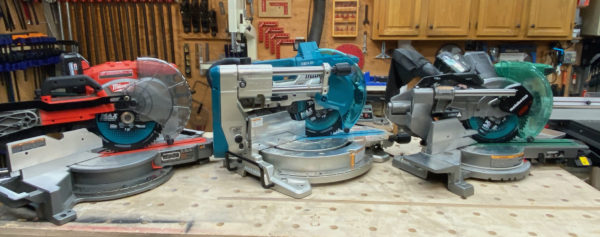
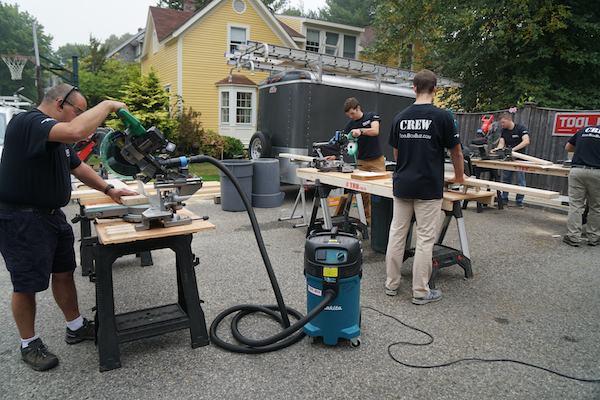
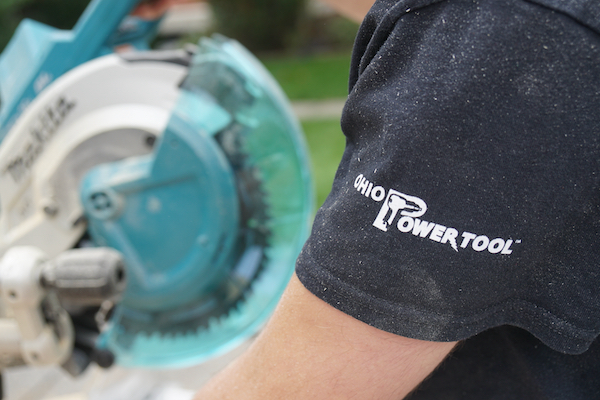
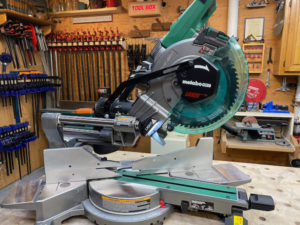
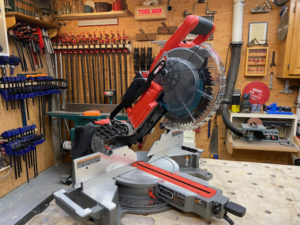
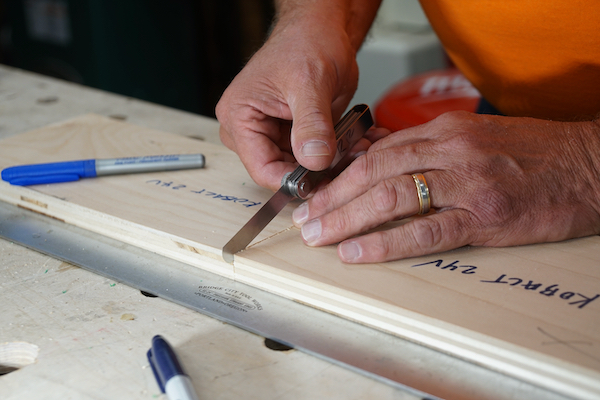
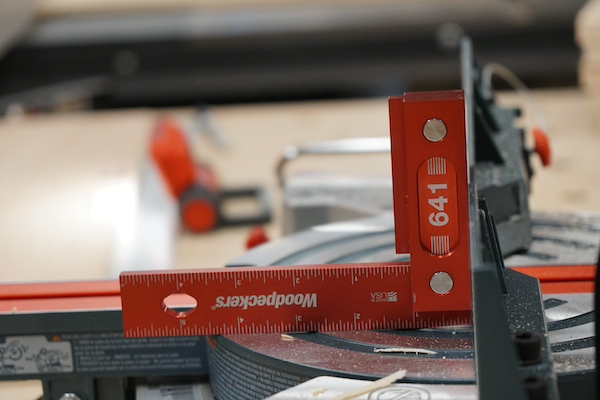
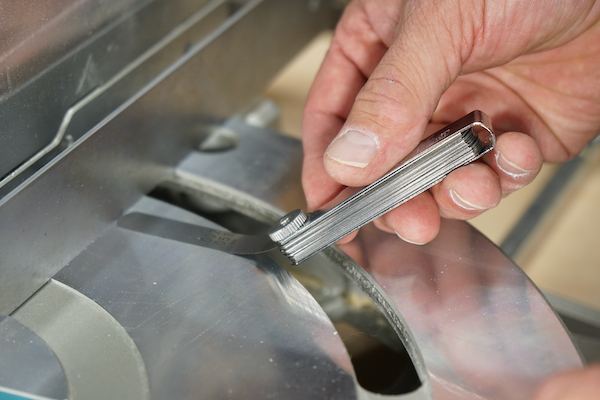
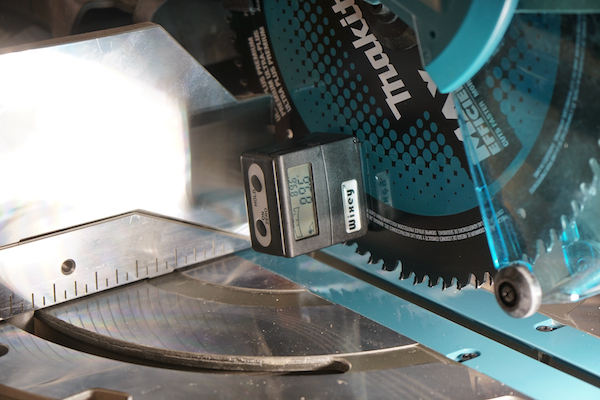
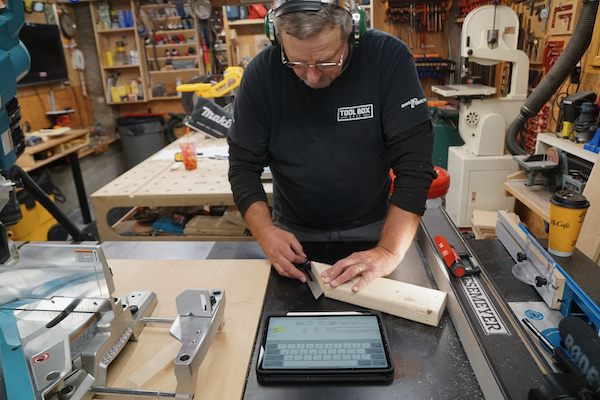
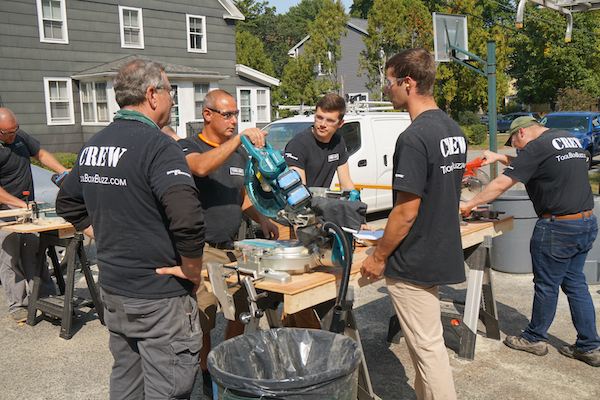
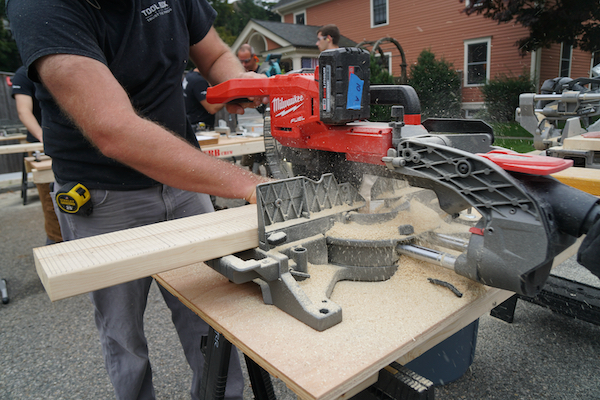
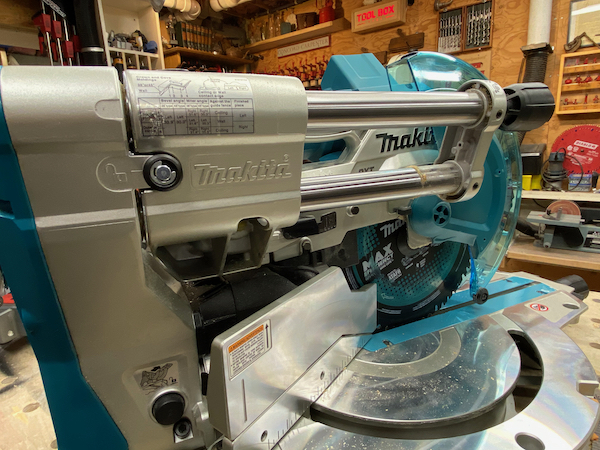
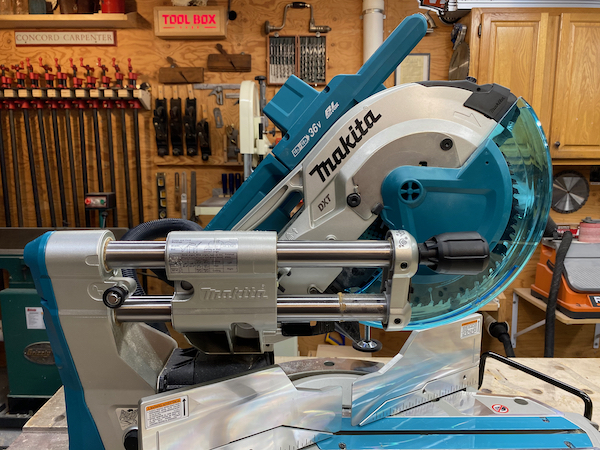
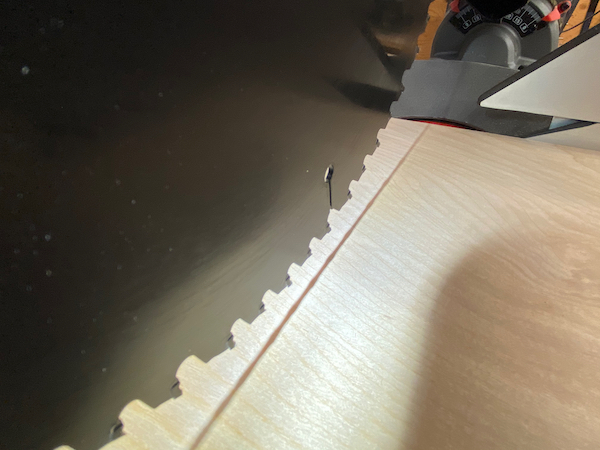
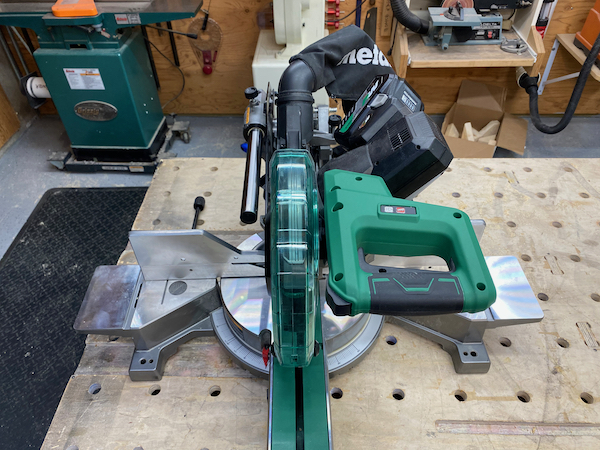
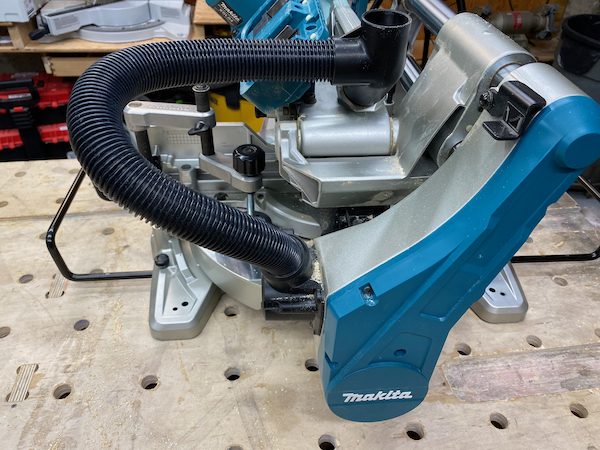
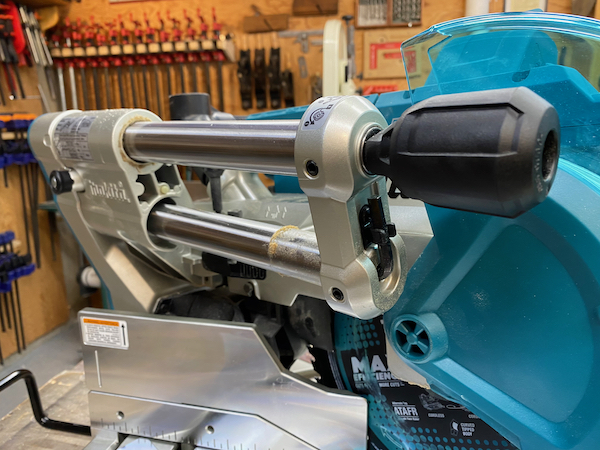
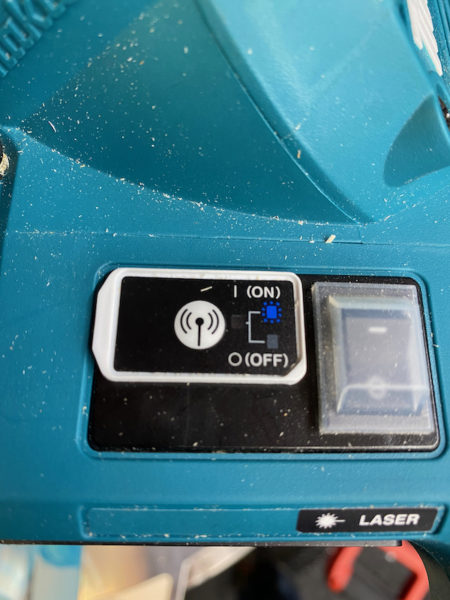
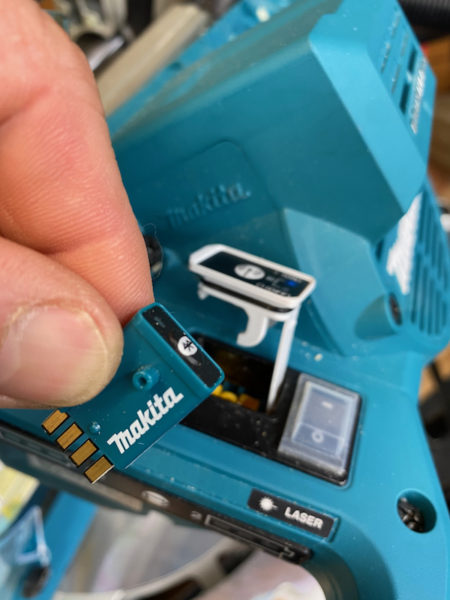

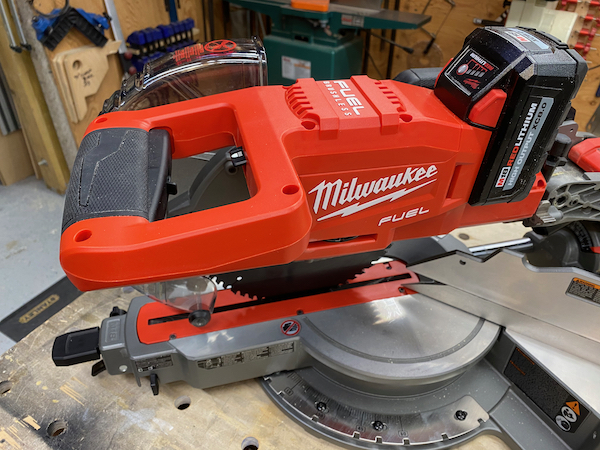
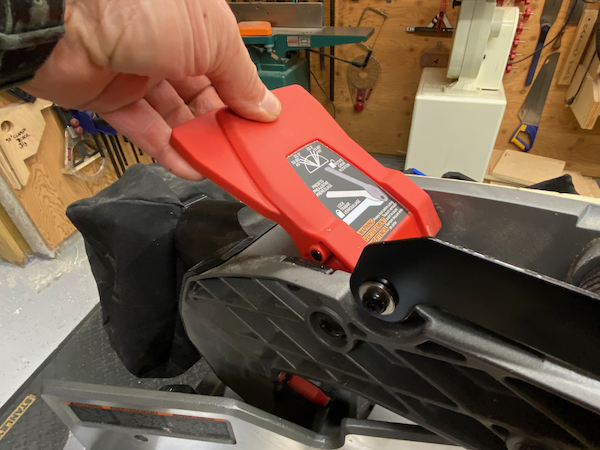
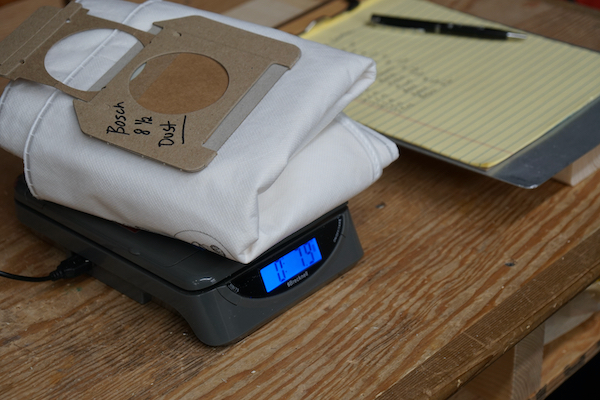
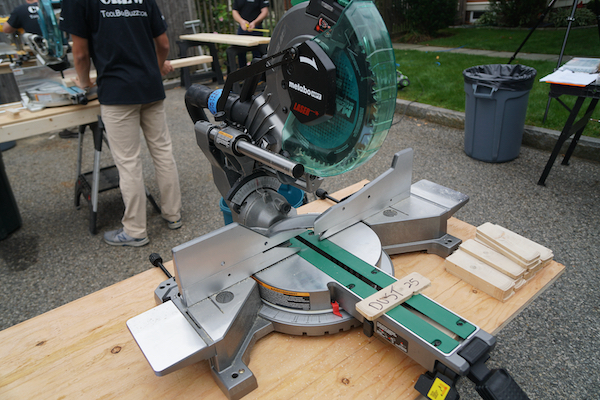
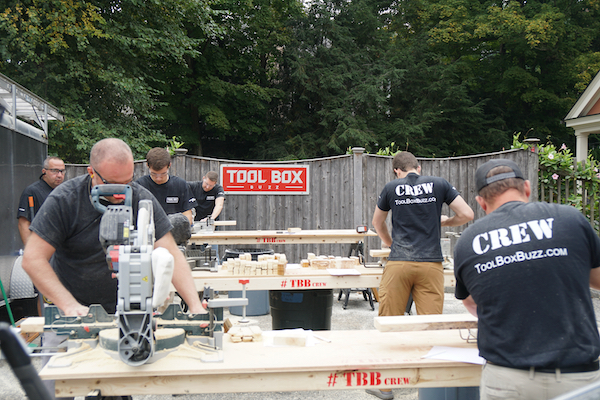
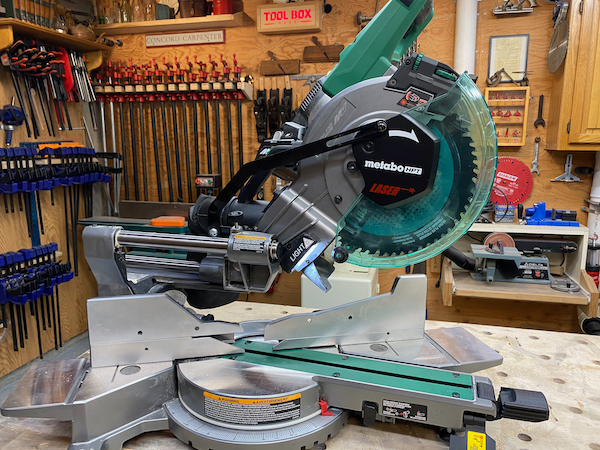
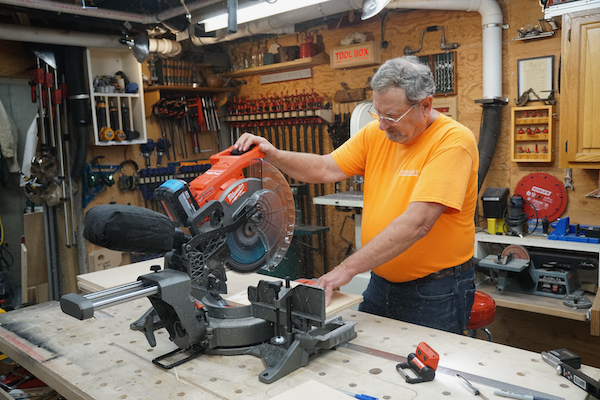
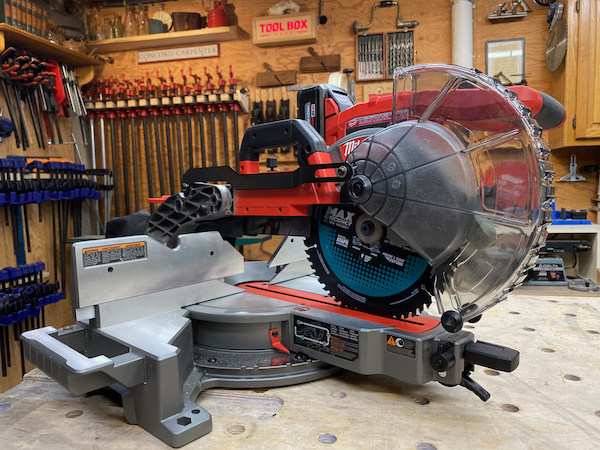
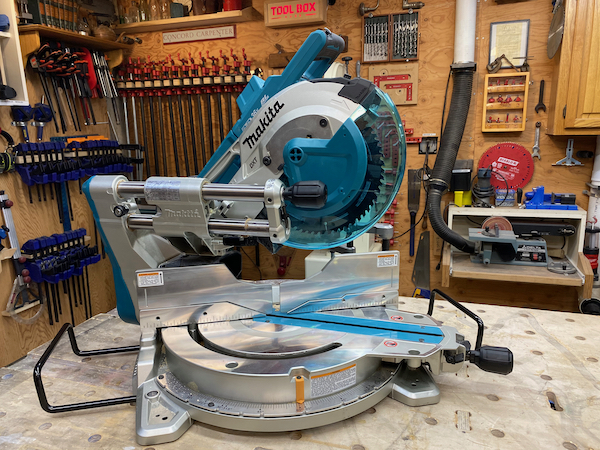
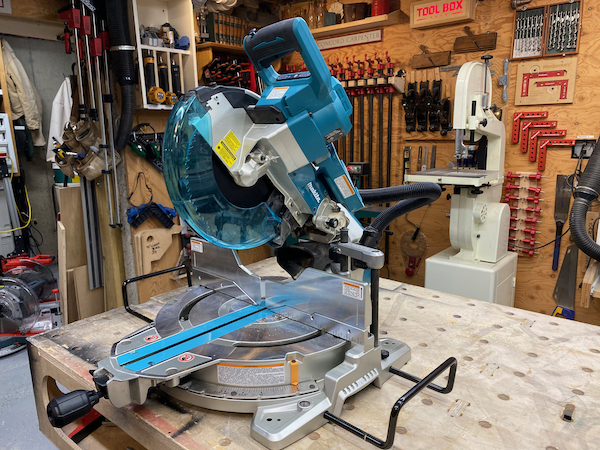
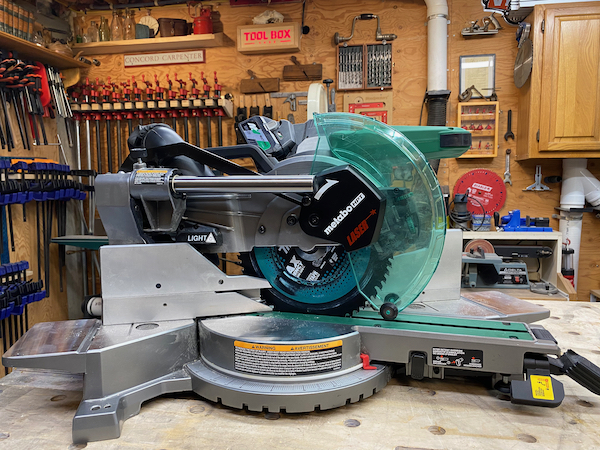
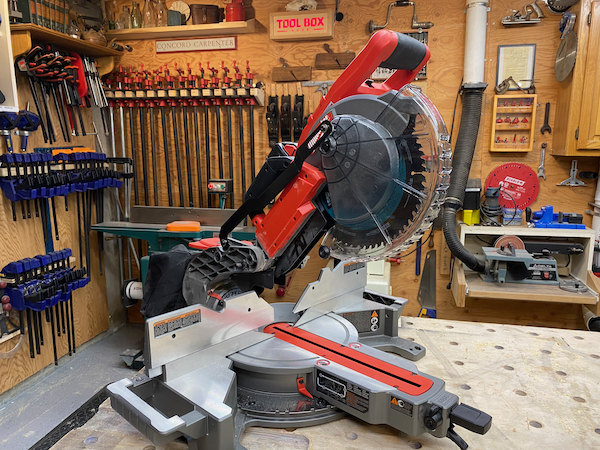
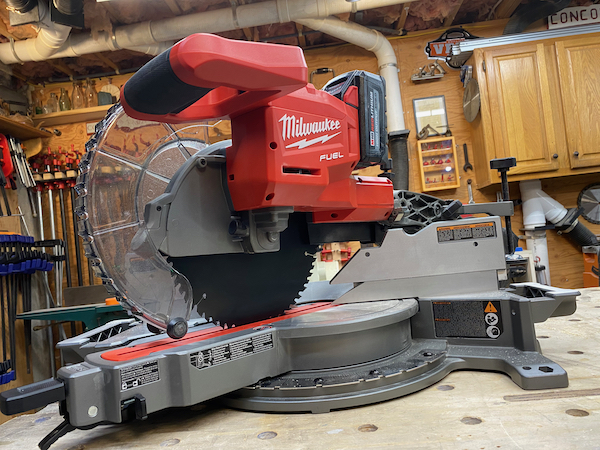
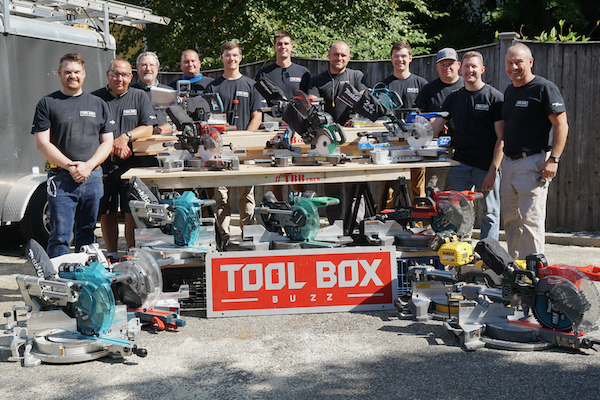













Y’all are number one for boots-on-the-ground qualified, and committed to in-depth testing! Awesome write up, as always👍
Of these three, I really like the Makita, but it is so darn large and heavy that I find myself thinking “might as well step up to the 12″ saw”….especially for the tall trim (have a lot of 6″+ base).
Unfortunately, the 12″ Makita cordless is SIGNIFICANTLY more expensive than the 10” and even bigger/heavier. The “portability” factor of the cordless model is nice, but at 60+ lbs I suspect most will do whatever they can to avoid hauling it around.
Ultimately, that has me looking at either the CORDED LS1219L for about $600 OR the opposite end of the spectrum: a compact cordless miter saw like Dewalt’s DCS361B 7 1/4. Looking forward to the upcoming 12″ and 7 1/4 Head to Heads.
Dang first world problems.
I bought this Makita to replace an ancient Ryobi plug-in model. I’d read all the bad reviews of the 1019L (corded version), but discovered that the cordless model was rated much higher, despite apparently employing the exact same sliding mechanism. I attributed this to a different production line, tweak made with the cordless model, or better packaging that prevented damage in shipment.
It’s a solid unit and seems very well made. Plunge cuts are smooth and the motor has plenty of power. 45 degree miters were dead on out of the box; didn’t try bevel cuts.
Unfortunately, sliding 90 degree cuts were cupped – just slightly, but enough to see when holding up to the light with a straight edge. This is the same problem that is widely reported with the 1019L. It’s just noticeable, but I think unacceptable for a $600 saw. There’s a fix, but it involves loosening the bolts and twisting the sliders slightly until you get it straight – a lot of trial and error. I didn’t do this, as I didn’t want to break anything. So back it went to Home Depot.
Whether it’s due to bad design or poor packaging that allows the unit to get damaged in shipment, I don’t know. Ultimately, it seems the Makita sliders are hit or miss and I missed.
Hi Guys!
I just unpacked the new Makita dual battery 10″ compact sliding mitre saw. When I tried adjusting the bevel, I am not sure what I did, but I got it to bevel to 22 1/2 degrees but it locked into that position and no matter what I do, I can’t get it to release and go back to the vertical or any other position. I have watched numerous videos which say to simply turn the locking knob adjustment on the front of the saw and then adjust the bevel – no luck. It just won’t move. Something has locked the bevel. Any suggestions you have would be really welcome.
Hi Doug,
I happen the own the exact saw (bought it pretty recently myself and haven’t had a chance to get it out to a job site yet). First make sure the bevel lock is loose. Then, nn the lower right of the bevel pivot there should be an approximately “L” shaped lever/knob. You want to pull this out and then rotate it so the tab is pointing up. You may need to “unweight” the body of the saw to make it easier to pull the knob out. This should unlock the 22.5 degree bevel. Here’s a photo from Makita’s website.

Please let us know if it cuts straight on sliding cuts. I really want to like this saw and am willing to give Makita another chance
Hi Doug,
The 90 degree crosscut test in our review covered this. While we didn’t publish numbers the Makita scored at the top of the pack in the 90 degree crosscut category meaning that it made a perfectly square, straight cut.
Thanks for the update, Ethan. Sounds like I should find a store that will let me unbox and try out the saw before I take it home.
I was really surprised at the poor quality packaging. The box was coming apart when it arrived and aside from some cardboard spacers, there was really nothing protecting the unit. The base of the box was taped to the top with single strip of packing tape wrapped around the outside. When I picked it up, the bottom of the box started falling out. I saw an unboxing of a competing DewWalt unit and they used molded styrofoam top and bottom – a much more secure method.
I received a couple of emails about how to unlock the bevel from the 22 1/2 degree position using the technique described above – that problem is solved. Thank you so much for the advice.
Now, I can’t get the saw to lock in the 90 degree vertical bevel position. It locks in all of the other pre-sets but not the vertical, which is most annoying since this the position in which I do most of my cust. It keeps flopping over to the left. Any ideas on how to lock it in the vertical position ?
doug
I have now learned from Makita that there is no hard stop at the 90 degree vertical bevel. You have to secure it by tightening the knob at the front of the machine. The other bevel angles lock in place automatically when tilted.
Doug
I just recently got back into construction after 17yrs.I grew up with my father running a cabinet shop using the 9-volt lineup when they were new. There’s a few tools that I prefer certain companies, I do a lot of heavy duty concrete work and there’s nothing like Hilti. But my go-to on any cordless handheld has always been Makita. I’m rounding out my re-equip, and this saw is awesome, you just have to manually set your zero bevel. Every other setting and auto lock is dead on. Which is something I’m going to do with any miter I get delivered freight anyhow. And just like when you buy the quality Makita products you could just feel the quality in your hands. It cuts everything with authority. Until I got it we were using a brand new Ridgid, which gets 90% of my jobs done easy. But even with a fresh blade and a fresh battery it always feels like you really have to concentrate and steady your material and use a baby motion to get a perfect angular cut. Whereas with the makita, if you happen to make a cut that isn’t perfect it’s because you didn’t do something right. I put this saw with my XD16 impact, the 7/16 hex torque, the 9in variable grinder, the sdsmax avt hammer, the 36v rear handle circular, and my coil framing nailer as best in class by far for those tools. I imagine the 12-in miter is pretty sweet too, but my second favorite which I already have for both sizes are the Hitachis. And I just can’t imagine ever absolutely needing a battery-powered 12-in miter. If and when I’m using that tool, it’s almost guaranteed I have easy power. I mean I have 25 18 volt batteries so I’m kind of locked into that platform. But I’ve used all the others, dewalt, milwaukee, rigid, Hitachi. They just don’t feel the same. It’s been a long time for me, so apparently they don’t really make table saws anymore. Which is fine cuz the 10-in DeWalt or rigid or perfectly capable tools. And I’ve destroyed three different consecutive models of Makita hammer drills, which is surprising and annoying. I’m going to give the 14 a try, but my old Gen 5 brushed Ridgid it is still getting it. And the job Max is certainly cool. And I I’ve used them all, that Milwaukee fuel impact is a serious tool, but almost too much. I prefer my four-speed Makita than that overpowered thing. That’s why I won’t buy a 40 volt Makita impact. I played with it two weeks ago when Makita debuted at our home Depot, it’s just too much. Unless you’re like building a cruise ship or something. I’ll probably get the 40 volt hammer drill just to see what it can do. I couldn’t imagine ever needing more than that, a rotary hammer, and a large grinder in 40. I have the all the 18 volt X2 and that’s far and away more than you’re ever likely to need. Stihl concrete saws, especially the chainsaw.. I’ll take my Hilti 70 LB jack hammer and 30 lb chipping hammer. Most bit sets and trim tools and storages I buy are DeWalt. Sawzall blades and hole saws I go Milwaukee. And those Bosch SDS max masonry bits are legit. But nothing has outworked Makita 18v hand tools my current 10-month gut and remodel. All the other guys are Milwaukee DeWalt or Ridgid. And they’re all pretty much using my Makita lineup for circular saw cutting, mitering, pneumatic nailing, concrete chipping/drilling. They’ve all had multiple tools break from other manufacturers during the course of this remodel. And the only Makita tool that myself or anyone has broke has been the hammer drills. Which were all older models, none brushless, one won’t hammer anymore, another won’t lock the chuck and the oldest one needs brushes. So I’ll give Makita one more chance on that, maybe when the 40v, but then I’m going to Ridgid. Bottom line is it makes the most sense to go with the tool that matches your battery platform. There’s very few offerings by any of the manufacturers that are so good that you should consider buying into a different platform. But these Makita miters are one of the few exceptions. A good place to get into the Makita platform, or is the only Makita battery powered tool in your lineup.